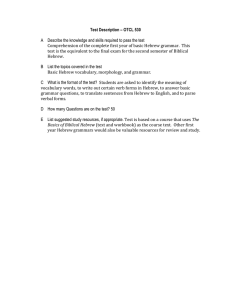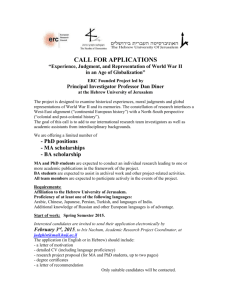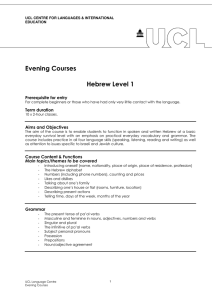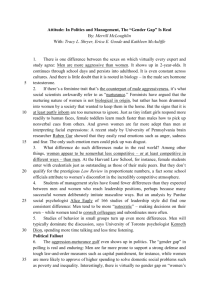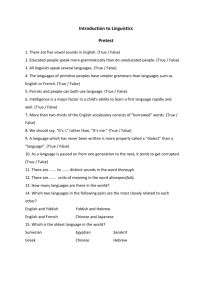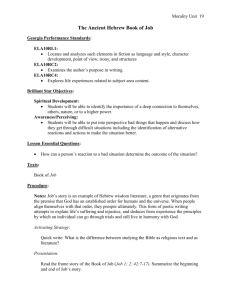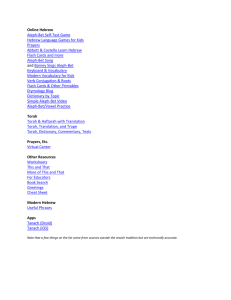The Hebrew Alphabet
advertisement
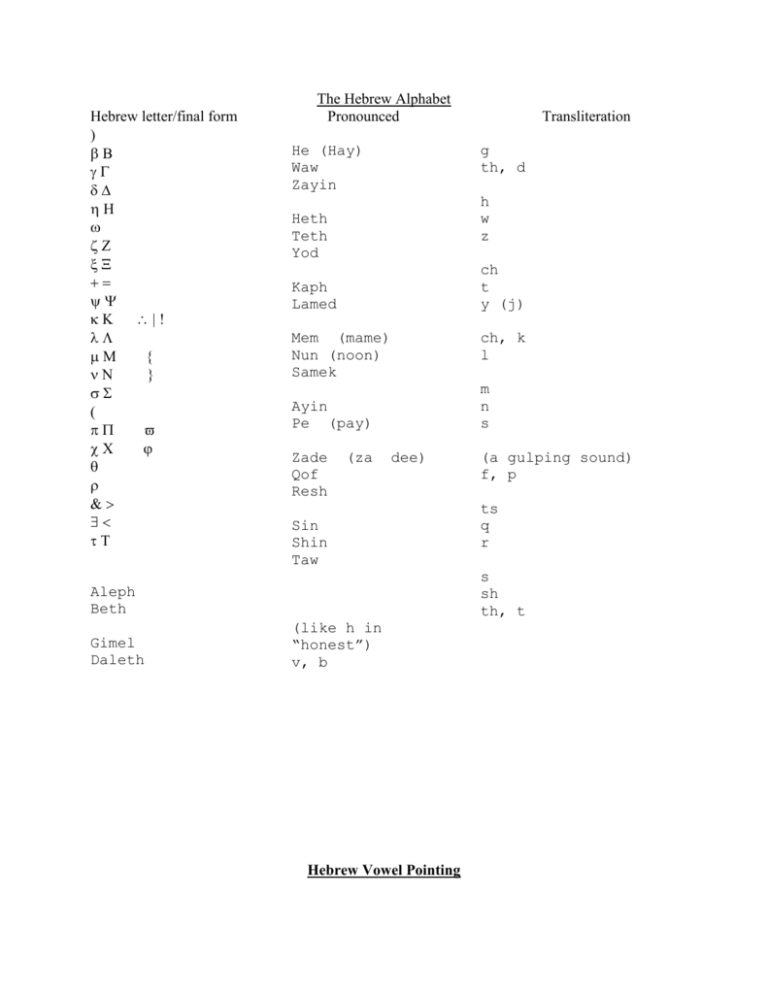
Hebrew letter/final form The Hebrew Alphabet Pronounced He (Hay) Waw Zayin g th, d h w z Heth Teth Yod ch t y (j) Kaph Lamed Mem (mame) Nun (noon) Samek ch, k l m n s Ayin Pe (pay) Zade Qof Resh (za dee) Sin Shin Taw (a gulping sound) f, p ts q r s sh th, t Aleph Beth Gimel Daleth Transliteration (like h in “honest”) v, b Hebrew Vowel Pointing Pointing Name Prounciation hireq, a short “i” as in “lid” segol, a short “e” as in “bed” tsere, a long “e” as in “they” holam, a long “o” as in “hole” qibbuts, a short “u” as in “bull” shureq, a long “u” as in “flute” hateph-pathah hateph-qametz hateph-segol schwa Hebrew Signs, which are not Vowels schwa, a sign to fill a vowelless letter maqqeph, when two or more short words are closely associated in meaning they are joined together by a hyphen-like line called Maqqeph, which means “binding.” They are considered as being virtually one word. Daghesh (“piercing”) is a dot in the heart of a letter. Daghesh Lene or weak and Daghesh Forte or strong. patah, a short “a” as in “had” qametz, a long “a” as in “yard” These are the four gutterals, or throatletters. They cannot be doubled and therefore never receive a Daghesh Forte. the definite article, “the” the inseparable prepositions the feminine ending on nouns and adjectives the plural ending on nouns and adjectives The construct state: When two words are so closely connected together that the word in the construct state (the first word) is dependent upon the second word, then the two words together form one compound idea. Example: “the man of God.”

